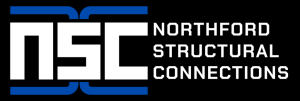“`html
A Beginner’s Guide to Double-Tee Shear Connections
The use of precast concrete elements like double tees has become widely favored in modern construction for their efficiency and strength. Among the essential components of double tees are shear connections, which help ensure structural integrity and stability. This article offers a comprehensive beginner’s guide to double-tee shear connections, covering their importance, design aspects, and various applications.
Understanding Double-Tee Shear Connections
Before diving into shear connections, it’s crucial to grasp what double tees are. A double-tee is a type of precast concrete structural element characterized by its shape, resembling the letter “T” when viewed in cross-section. This geometric design enables double tees to support high loads while utilizing material efficiently, making them suitable for flooring, roofing, and other structural applications.
The Role of Shear Connections
Shear connections are critical in double-tee assemblies, providing the necessary bond between vertical and horizontal components. Their primary purpose is to transfer shear forces generated due to vertical loads. Without adequate shear connections, the integrity of a structure could be compromised, potentially leading to catastrophic failure.
Types of Double-Tee Shear Connections
Different types of double-tee shear connections can be employed based on design requirements and project specifications. Below are some common types:
1. Shear Key Connections
Shear key connections incorporate a protruding section of concrete that fits tightly into a corresponding recess of another component. This design maximizes the shear transfer capability between elements.
2. Shear Stud Connections
In shear stud connections, welded steel studs are embedded in the concrete. These studs provide additional shear resistance by creating a mechanical interlock between adjacent precast units, enhancing load transfer efficiency.
3. Grouted Connections
Grouted connections involve the use of grout to fill gaps between precast components. The grout solidifies, forming a bond that effectively transfers shear forces. Careful attention to grout quality is essential for maintaining strength.
4. Mechanical Interlocking Systems
Mechanical interlocking systems use various hardware to create a bond between elements. This method allows for some flexibility, accommodating slight movements without losing structural integrity.
Factors Influencing Design
Designing a double-tee shear connection involves several key factors:
1. Load Requirements
Understanding the types and magnitudes of loads acting on a structure is crucial. Shear connections must be designed to handle potential shear forces and moment loads effectively.
2. Connection Geometry
The geometry of the connection plays a significant role in its performance. Designers must carefully consider the shape and size of both the double tee and the shear connection to ensure adequate load distribution.
3. Material Properties
The choice of materials affects the overall performance of shear connections. Concrete strength, yielding properties of steel, and environmental factors contribute to the design considerations.
4. Construction Methods
Different construction methods may influence shear connection design. For instance, precast elements can be erected using cranes, necessitating robust connections to support temporary loads during installation.
Design Codes and Standards
Adherence to design codes and standards is crucial for ensuring safety and reliability. Various organizations provide guidelines for precast concrete design, including:
1. American Concrete Institute (ACI)
ACI publishes insights into concrete practices, including recommendations for designing shear connections. Their standards help engineers ensure quality and safety in construction.
2. Precast/Prestressed Concrete Institute (PCI)
PCI offers guidelines specifically for precast concrete construction, including essential requirements for shear connection design and performance.
3. International Building Code (IBC)
The IBC sets regulatory standards for construction projects. Compliance with these codes helps ensure that all elements, including shear connections, are designed with performance and safety as priorities.
Benefits of Double-Tee Shear Connections
Choosing double-tee shear connections provides various advantages, including:
1. Efficiency
Precast double tees are designed for rapid installation, reducing overall project timelines significantly. Efficient shear connections augment this effectiveness, minimizing the need for extensive onsite adjustments.
2. Structural Integrity
Well-designed shear connections improve the overall stability of structures. They enable continuous load transfer, ensuring structural reliability under various conditions.
3. Cost-Effectiveness
Using double-tee shear connections can reduce material waste and labor costs. Their efficient design translates into lower overall project expenses without compromising quality.
Common Applications
Double-tee shear connections find usage in diverse construction areas:
1. Parking Structures
These structures often utilize double tees for their ability to span long distances while supporting heavy loads. Shear connections help manage lateral forces, ensuring stability.
2. Industrial Buildings
In industrial settings, the need for open spaces often leads to the use of double tees. Their shear connections enable efficient load handling, vital for equipment and machinery placement.
3. Commercial Buildings
Double tees are popular in commercial construction due to their versatility. Shear connections ensure alignment with design aesthetics and structural requirements.
4. Bridges and Overpasses
Double-tee systems are increasingly used in bridge construction. Shear connections help manage the forces generated due to traffic loads and environmental factors.
Quality Assurance and Testing
Quality assurance during the fabrication and installation of shear connections is indispensable. Testing methods may include:
1. Load Testing
Load tests assess the performance of shear connections under simulated load conditions. These tests ensure connections can withstand anticipated forces in actual service.
2. Non-Destructive Testing (NDT)
NDT methods, such as ultrasonic testing, help identify potential weaknesses in shear connections without causing damage. This proactive approach minimizes risks associated with undetected flaws.
3. Regular Inspections
Periodic inspections of existing structures help identify wear, tear, or deterioration in shear connections. Maintenance strategies can then be devised to extend the lifespan of precast components.
Conclusion
Understanding double-tee shear connections is essential for effective design and construction in the realm of precast concrete. Properly designed shear connections not only ensure structural integrity but also enhance project efficiency. For beginners, recognizing various connection types, their purposes, and the factors influencing their design offers a solid foundation to build upon. By adhering to established standards and ensuring thorough quality assurance, the longevity and reliability of structures utilizing double-tee shear connections can be significantly improved.
“`







